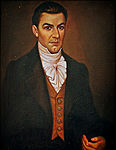
Honduras was inhabited by many indigenous peoples when the Spanish arrived in the 16th century. The western-central part of Honduras was inhabited by the Lencas, the central north coast by the Tol, the area east and west of Trujillo by the Pech, the Maya and Sumo. These autonomous groups traded with each other and with other populations as distant as Panama and Mexico. Honduras has ruins of several cities dating from the Mesoamerican pre-classic period that show the pre-Columbian past of the country.

The Federal Republic of Central America, initially known as the United Provinces of Central America, was a sovereign state in Central America which existed from 1823 to 1839/1841. The Federal Republic of Central America was composed of five states: Costa Rica, El Salvador, Guatemala, Honduras, and Nicaragua, as well as a Federal District from 1835 to 1839. Guatemala City was the federal republic's capital city until 1834, when the seat of the federal government was relocated to San Salvador. The Federal Republic of Central America was bordered to the north by Mexico, to the south by Gran Colombia, and on its eastern coastline by the Mosquito Coast and British Honduras.

José Francisco Morazán Quesada was a liberal Central American politician and general who served as president of the Federal Republic of Central America from 1830 to 1839. Before he was president of Central America he was the head of state of Honduras. He rose to prominence at the Battle of La Trinidad on November 11, 1827. Morazán then dominated the political and military scene of Central America until his execution in 1842.
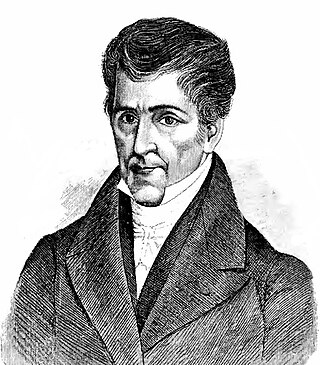
José Cecilio Díaz del Valle was a philosopher, politician, lawyer, and journalist and one of the most important figures in Central America during the transition from colonial government to independence, displaying a wide-ranging expertise in public administration management.
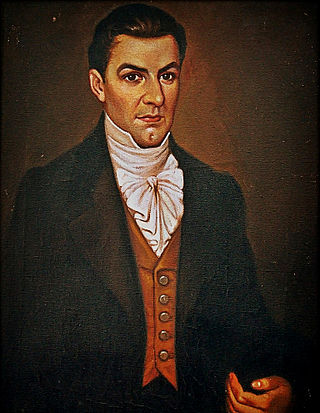
Manuel José Arce y Fagoaga was a Salvadoran statesman and military officer who served as the first president of the Federal Republic of Central America from 1825 to 1829.

José Dionisio de la Trinidad de Herrera y Díaz del Valle was a Liberal Honduran politician, head of state of Honduras from 1824 to 1827 and head of state of Nicaragua from 1830 to 1833. During his terms, Honduras and Nicaragua were states within the Federal Republic of Central America. Herrera was an uncle of the Liberal Central American general Francisco Morazán.
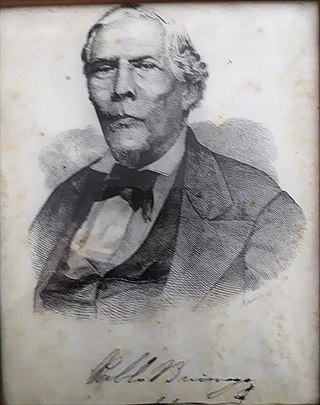
Pablo Sánchez de Buitrago Sandoval y Benavente was a legitimist Nicaraguan politician who served as the 2nd Supreme Director of Nicaragua from 4 March 1841 to 1 April 1843. He was the first non-acting, elected Supreme Director.
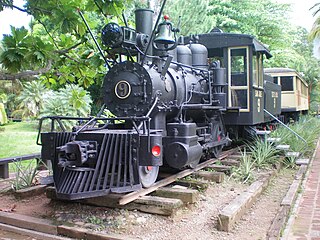
Honduras is a republic in Central America, at times referred to as Spanish Honduras to differentiate it from British Honduras, which became the modern-day state of Belize.

Authoritarian General Tiburcio Carías Andino controlled Honduras during the Great Depression, until 1948. In 1955—after two authoritarian administrations and a general strike initiated by banana workers—young military reformists staged a coup that installed a provisional junta and paved the way for constituent assembly elections in 1957. This assembly appointed Ramón Villeda Morales as president and transformed itself into a national legislature with a 6-year term.
The modern history of Honduras is replete with large-scale disappearances of left-leaning union members, students and others. The legislature approved a new constitution in 1982, and the Liberal Party government of President Roberto Suazo Córdova took office. Suazo relied on United States support — including controversial social and economic development projects sponsored by the United States Agency for International Development — during a severe economic recession. According to the US State Department, "Honduras became host to the largest Peace Corps mission in the world, and non-governmental and international voluntary agencies proliferated."
General elections were held in Honduras on 28 March 1971. Voters went to the polls to elect a new President of the Republic and a new Congress. The two main parties, the National Party and Liberal Party, had agreed before the election to split the Congressional seats equally between them, with each party being awarded 32 of the 64 seats. Additional one seat was to be allocated to the winner of the presidential elections as the president was entitled to one seat in parliament, while both parties were to be equally represented in the Supreme Court in all state institutions including the Government. Ramón Ernesto Cruz Uclés of the National Party won the presidential election with 53% of the vote. Approximately 40% out of total of around 900,000 voters abstained from voting at the elections. Some of the major topics at the elections was the issue of commitment to continued participation in the Central American Common Market and approach to the relations with El Salvador after the Football War.

Constituent Assembly elections were held in Honduras on 12 February 1965. The Constituent Assembly subsequently elected Oswaldo López Arellano as president.
The Conservative Party was one of the two major political parties in Guatemala during the nineteenth and early twentieth century. The Conservative Party originated in the Serviles political group—consisting primarily of merchants and estate owners—representing a strong central government and a continuation of the colonial-era privileges. The Conservatives sought to preserve the power and privileges of the Catholic Church, as well as several of the existing monopolies—particularly the tobacco monopoly and the consulado. The Conservative Party consolidated much of their power between 1839 - 1871, mostly during the period under President Rafael Carrera.

Ramón Rosa Soto was a lawyer, journalist, politician and liberal writer of the second half of the nineteenth century. He was the ideologue of educational changes of Liberal Reform in Guatemala and then in Honduras. He served as Principal Minister during the rule of his cousin, Dr. Marco Aurelio Soto and was associated with Soto's mining investments.

The Act of Independence of Central America, also known as the Act of Independence of Guatemala, is the legal document by which the Provincial Council of the Province of Guatemala proclaimed the independence of Central America from the Spanish Empire and invited the other provinces of the Captaincy General of Guatemala to send envoys to a congress to decide the form of the region's independence. It was enacted on 15 September 1821.

The 1827 Honduran coup d'état was a military takeover of the Honduran government under Dionisio de Herrera, initiated on April 4 by the then Lieutenant General José Justo Milla.
Federal elections were held in the Federal Republic of Central America in 1830. They followed the victory of rebel liberal leader Francisco Morazán in the First Central American Civil War in 1829 when he took Guatemala City. Following the end of the war, Morazán urged Congress for new elections.
Federal elections were held in the Federal Republic of Central America in late 1833.

The First Central American Civil War was a civil political and military conflict within the Federal Republic of Central America which lasted from 1827 until 1829. The civil war was fought between Liberal and Conservative lines with Francisco Morazán leading the Liberals and Manuel José Arce, a former Liberal, leading the Conservatives.

From January 1822 to July 1823, the Captaincy General of Guatemala, a former Spanish colony, was controlled by the First Mexican Empire, and briefly, the Supreme Executive Power—the provisional government that succeeded Mexican imperial rule. The captaincy general consisted of the provinces of Chiapas, Costa Rica, El Salvador, Guatemala, Honduras, and Nicaragua—the six southernmost provinces of the Mexican Empire. The incorporation of Central America brought Mexico to the height of its territorial extent.
